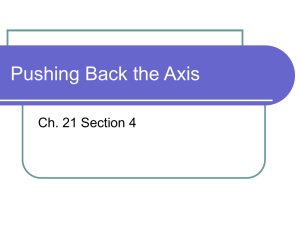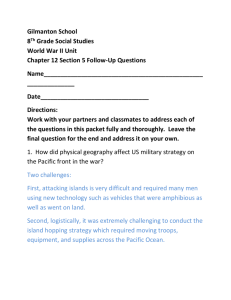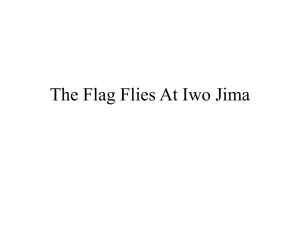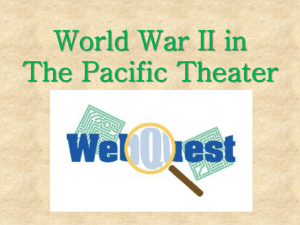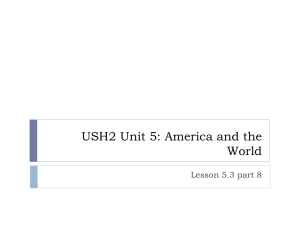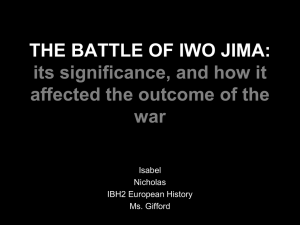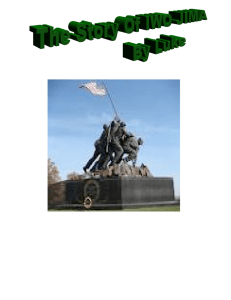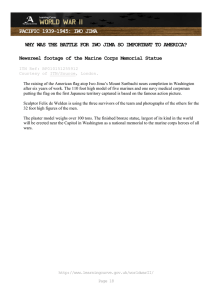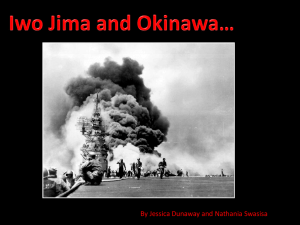The Battle for Iwo Jima: WWII History & Flag Raising
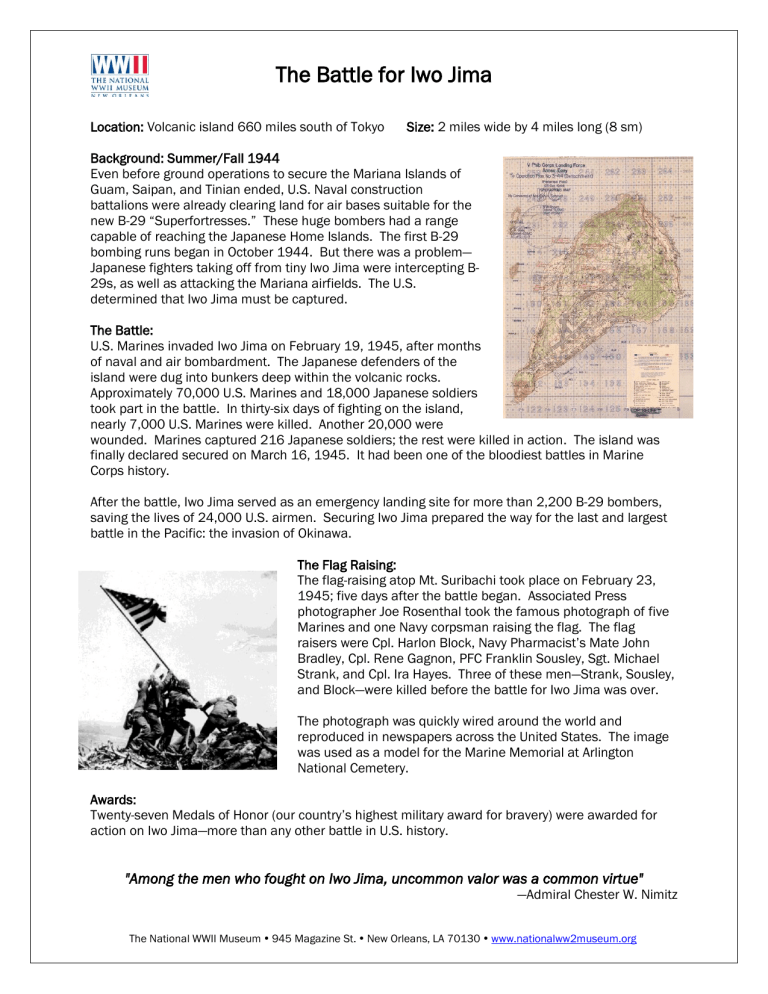
The Battle for Iwo Jima
Location: Volcanic island 660 miles south of Tokyo Size: 2 miles wide by 4 miles long (8 sm)
Background: Summer/Fall 1944
Even before ground operations to secure the Mariana Islands of
Guam, Saipan, and Tinian ended, U.S. Naval construction battalions were already clearing land for air bases suitable for the new B-29 “Superfortresses.” These huge bombers had a range capable of reaching the Japanese Home Islands. The first B-29 bombing runs began in October 1944. But there was a problem—
Japanese fighters taking off from tiny Iwo Jima were intercepting B-
29s, as well as attacking the Mariana airfields. The U.S. determined that Iwo Jima must be captured.
The Battle:
U.S. Marines invaded Iwo Jima on February 19, 1945, after months of naval and air bombardment. The Japanese defenders of the island were dug into bunkers deep within the volcanic rocks.
Approximately 70,000 U.S. Marines and 18,000 Japanese soldiers took part in the battle. In thirty-six days of fighting on the island, nearly 7,000 U.S. Marines were killed. Another 20,000 were wounded. Marines captured 216 Japanese soldiers; the rest were killed in action. The island was finally declared secured on March 16, 1945. It had been one of the bloodiest battles in Marine
Corps history.
After the battle, Iwo Jima served as an emergency landing site for more than 2,200 B-29 bombers, saving the lives of 24,000 U.S. airmen. Securing Iwo Jima prepared the way for the last and largest battle in the Pacific: the invasion of Okinawa.
The Flag Raising:
The flag-raising atop Mt. Suribachi took place on February 23,
1945; five days after the battle began. Associated Press photographer Joe Rosenthal took the famous photograph of five
Marines and one Navy corpsman raising the flag. The flag raisers were Cpl. Harlon Block, Navy Pharmacist’s Mate John
Bradley, Cpl. Rene Gagnon, PFC Franklin Sousley, Sgt. Michael
Strank, and Cpl. Ira Hayes. Three of these men—Strank, Sousley, and Block—were killed before the battle for Iwo Jima was over.
The photograph was quickly wired around the world and reproduced in newspapers across the United States. The image was used as a model for the Marine Memorial at Arlington
National Cemetery.
Awards:
Twenty-seven Medals of Honor (our country’s highest military award for bravery) were awarded for action on Iwo Jima—more than any other battle in U.S. history.
"Among the men who fought on Iwo Jima, uncommon valor was a common virtue"
—Admiral Chester W. Nimitz
The National WWII Museum 945 Magazine St. New Orleans, LA 70130 www.nationalww2museum.org
